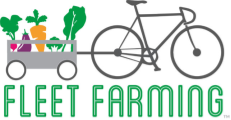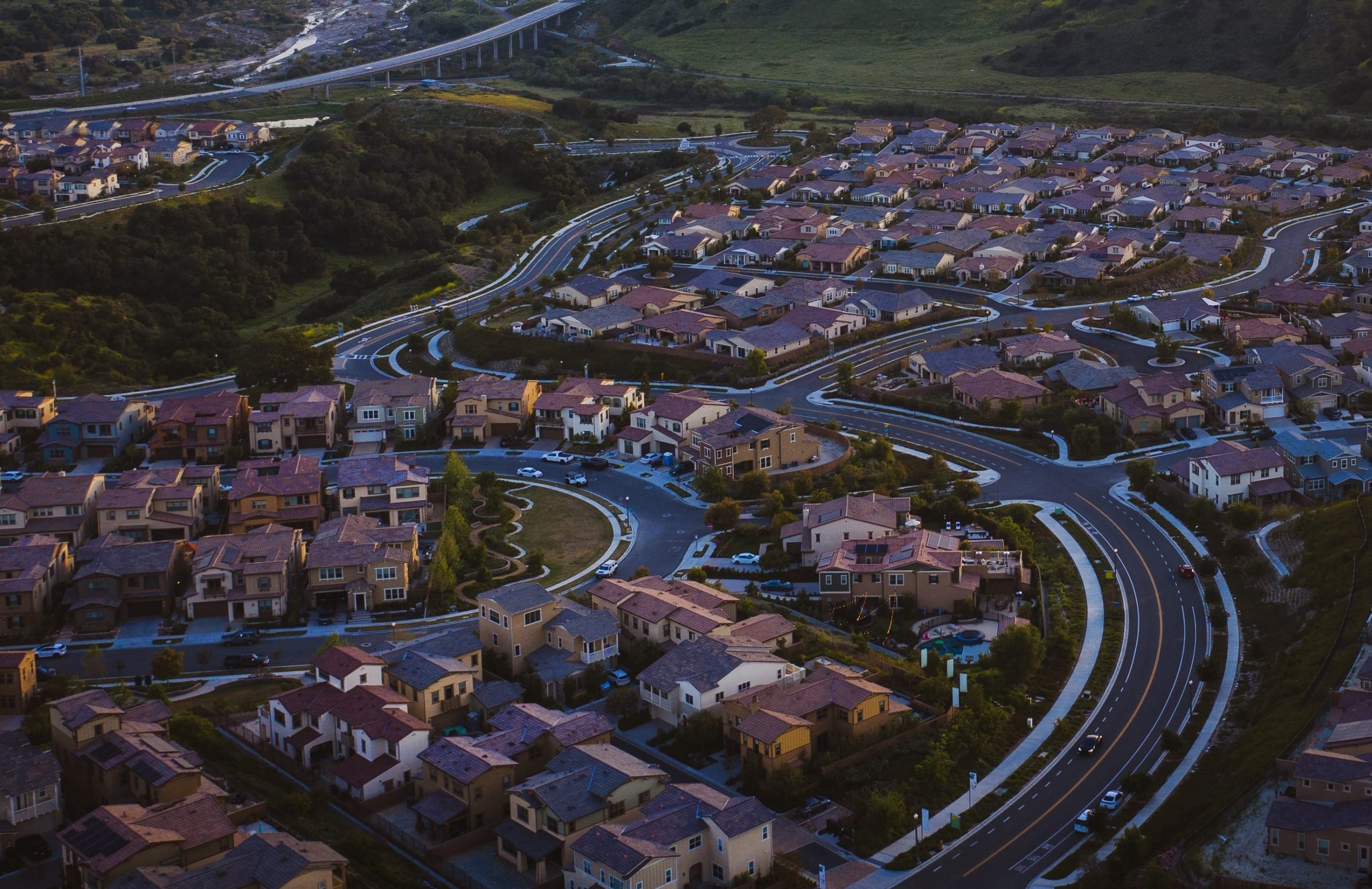
What is Urban Sprawl?
Urban Sprawl is defined as “the rapid expansion of the geographic extent of cities and towns, often characterized by low-density residential housing, single-use zoning, and increased reliance on the private automobile for transportation.”1 After World War II, the federal highway system was created and the Federal Housing Administration’s long-term housing construction and loans insurance program helped to promote urban sprawl.2 Then, the availability of trucking for freight transportation allowed for a manufacturing movement away from cities.2 Between the 1950s and 70s, the middle class left their cities for the suburbs -contributing to the disintegration of older cities, by the 80s, whose municipal governments could not fund services for their residents after the amount of tax collected shrunk, with businesses and wealthier families leaving.2 The suburbs were more aesthetically pleasing, and the land was “relatively inexpensive”1, and “some citizens moved to the suburbs to enjoy a lifestyle that was ostensibly closer to nature.”1
Environmental Impacts
Impacts of sprawling include ecosystem destruction -eliminating wetlands and forests.2 For example, 72% of Florida’s net wetland losses between 1985 and 1996 were attributed to urban and rural development3 and by 2070 Florida is estimated to use another 5 million acres of “farms, forests and unprotected green space”4 for the growing population. Another connected impact is habitat fragmentation. The Florida Panther, endangered since 1967, happens to be one of those species suffering from habitat fragmentation due to urban sprawl as “large numbers of panthers died as the expanding network of roads connecting Florida’s rapidly growing human population spread throughout its range.”5 Sprawl also contributes to water pollution and decreased water quality, including increased levels of polycyclic aromatic hydrocarbons (PAHs) in lakes and reservoirs which threatens aquatic life6; Air pollutants make their way into waterways by rain and PAHs come from “soot, asphalt, motor oil, tire and exhaust emissions”6 as we know one characteristic of urban sprawl is the increased reliance on automobiles -traffic. The people who move to the suburbs, work elsewhere and have to commute to the city daily; along with trips to the grocery stores and the like by their own automobile. Cities are compact, so the people who live there are able to walk, ride a bicycle, or use public transit in their daily commute.2
“By the early 21st century the average to-work commute time for Americans was 26.9 minutes, and the bulk of this was done by automobile.”7

Urban sprawl is also associated with increased energy usage (and therefore more fossil fuel usage, greenhouse emissions, and air pollution) from development and transportation, to heating, cooling, and lighting which are fueled by “gasoline, home-heating oil, natural gas, and coal.”7 Urban sprawl also has issues with decreased energy efficiency. In compact areas, people tend to live in buildings, closer together in smaller spaces. This reduces the amount of energy needed for heating and cooling.2 Power lines are also shorter in cities and are more energy-efficient.2
“Exurban low-density neighbourhoods consume more energy per capita than their high-density counterparts closer to the city’s core.”7
Why is Urban Agriculture Becoming Important?
With the growing population of people in urbanized, suburbanized areas and a dramatic loss in agricultural/farmland due to urban expansion, we are forced to look at new plans for food security since it’s thought by 2050 “two thirds of the world’s population will be living in metropolitan centres.”8 1.4 million hectares or about 3,459,475 million acres of open space were taken by urban sprawl in the US between 1990 and 2000.9 This land space decreases “our ability to grow food, fiber and timber.”9
“Urban Agriculture is part of a local food system where food is produced within an urban area and marketed to consumers within that area. Urban farming can also include animal husbandry (e.g., breeding and raising livestock), beekeeping, aquaculture (e.g., fish farming), aquaponics (e.g., integrating fish farming and agriculture), and non-food products such as producing seeds, cultivating seedlings, and growing flowers.”10
Urban agricultural projects can range from smaller public or private community gardens to larger urban farms and orchards. Land revitalization is aided by urban farms using areas that have been previously abandoned or underutilized.10 The manufacturing and industry shifts across the US left many properties vacant and contaminated, these areas are called brownfields.11 Of course, urban agriculture requires safe, uncontaminated soils so the land that would be reused would be subject to soil testing, then cleanup or instead of using “raised beds and other growing techniques”11 to make sure of safe consumption.

The EPA actually has a Land Revitalization Program which works to help communities redevelop13 and promotes the “sustainable reuse of formerly contaminated properties.”14
Smart Growth
The term “smart growth” came around in the 1990s to address growth management approaches to diminish the side effects of urban sprawl.2 This included “walkable cities; establishing fast, efficient public transportation; and locating dense, mixed-use development at transit nodes.”2 The newer term, “urban sustainability,” discusses the need for societal efforts in environmental sustainability.2
Smart Growth Principles2
FROM LAYZER AND RINFRET IN THE ENVIRONMENTAL CASE
- Preserve public goods and resources like air, water, and landscapes through expansion prevention, environmental planning, habitat preservation, and the creation of energy conservation systems.
- Minimize negative externalities from land use (you might have heard about Environmental Impact Assessment before construction projects to evaluate “potential impacts associated with a development project”15 and includes mitigation to avoid and reduce negative environmental and health impacts) and to separate auto-use lands and pedestrian-oriented ones.
- “Maximize positive land-land use impacts”2, a job-to-house balance, connecting street networks with direct routes, networks for not only motorists but for pedestrians and bicyclists too, etc. Single-use zoning impedes land maximization. In comparison, mixed-use zoning allows a mix of residential, commercial, and industrial uses in an area which can reduce transportation costs and reliance on roadways.16
- Reduce public fiscal costs by providing public facilities/services.
- “Maximize social equity”2 which also needs a job-to-house balance, affordable housing, plus accessibility to work and retail establishments, and “offer socioeconomic balance within neighborhoods.”2
Learn More
If you’re a Florida resident, learn more about the Urban Agriculture Pilot Project: https://fleetfarming.org/the-urban-agriculture-pilot-project-act/
Also if you’re a Florida resident, learn more about community gardens in the City of Orlando: https://fleetfarming.org/community-gardens-a-step-in-the-right-direction/
Another for Florida residents interested in Smart Growth check out the Facebook group, Smart Growth Central Florida: https://www.facebook.com/groups/SmartGrowthCF/
Visit the USDA website for Urban Agriculture Grants and Engagement Opportunities: https://www.farmers.gov/manage/urban/opportunities
Learn more about Land Revitalization: https://www.epa.gov/land-revitalization
For Smart Growth Advocacy visit: https://smartgrowthamerica.org/take-action/advocacy/
If you’re interested in how “Urban Inequalities Undermine Sustainability Efforts” you can read Principle 3 in Principles of Urban Sustainability: A Roadmap for Decision Making: https://www.nap.edu/read/23551/chapter/5#29 (Page 31).
Sources
- “Urban Sprawl.” Encyclopædia Britannica, Encyclopædia Britannica, Inc., www.britannica.com/topic/urban-sprawl.
- “Chapter 15: Making Trade-Offs.” The Environmental Case: Translating Values into Policy, by Judith A. Layzer and Sara R. Rinfret, CQ Press, an Imprint of SAGE Publications, Inc, 2020, pp. 499–502.
- Dahl, Thomas E. “Florida’s Wetlands: An Update on Status and Trends 1985 to 1996.” Florida’s Wetlands: An Update on Status and Trends, 1985 to 1996, U.S. Fish and Wildlife Service, www.fws.gov/wetlands/documents/Floridas-Wetlands-An-Update-on-Status-and-Trends-1985-to-1996.pdf.
- Staletovich, Jenny. Sprawl Could Gobble up Another 5 Million Acres in Florida by 2070, Miami Herald, 2016, www.miamiherald.com/news/local/environment/article102028332.html.
- “TOP 10 U.S. ENDANGERED SPECIES THREATENED BY HUMAN POPULATION .” Top 10 U.S. Endangered Species Threatened by Human Population, Center for Biological Diversity, www.biologicaldiversity.org/programs/population_and_sustainability/species.html.
- “Pollution From Urban Sprawl Threatens Aquatic Life In Major U.S. Cities.” ScienceDaily, American Chemical Society, 29 Sept. 2000, www.sciencedaily.com/releases/2000/09/000929073033.htm.
- “The Problem of Urban Sprawl.” Encyclopædia Britannica, Encyclopædia Britannica, Inc., www.britannica.com/explore/savingearth/urban-sprawl.
- Hatab, Assem Abu, et al. “Urban Sprawl, Food Security and Agricultural Systems in Developing Countries: A Systematic Review of the Literature.” Cities, Pergamon, 12 June 2019, www.sciencedirect.com/science/article/pii/S0264275118310485.
- “Urban Sprawl.” Everything Connects, www.everythingconnects.org/urban-sprawl.html.
- “Agricultural Crops.” EPA, Environmental Protection Agency, www.epa.gov/agriculture/agricultural-crops#UrbanAgriculture.
- “Land Revitalization Fact Sheet: Urban Agriculture.” Land Revitalization Fact Sheet – Urban Agriculture, EPA, 2011, www.epa.gov/sites/default/files/2015-08/documents/fs_urban_agriculture.pdf.
- “Land Revitalization.” EPA, Environmental Protection Agency, www.epa.gov/land-revitalization.
- Office of Land and Emergency Management’s Land Revitalization, EPA, www.epa.gov/sites/default/files/2021-02/documents/final_lr_brochure_revised_2-17-21_508_compliant.pdf.
- Land Revitalization Program Tools for Communities, EPA, www.epa.gov/sites/default/files/2016-02/documents/land_revitalization_program_tools_fs_1-29-16b.pdf.
- “Environmental Impact Assessment of Construction Projects – Concept and Guidelines .” The Constructor, 8 Sept. 2016, https://theconstructor.org/environmental-engg/enivironmental-impact-assessment-construction/13057/.
- Adams, Tyler. “Mixed-Use Zoning.” Sustainablecitycode.org, Sustainable Development Code, https://sustainablecitycode.org/brief/mixed-use-zoning/.

